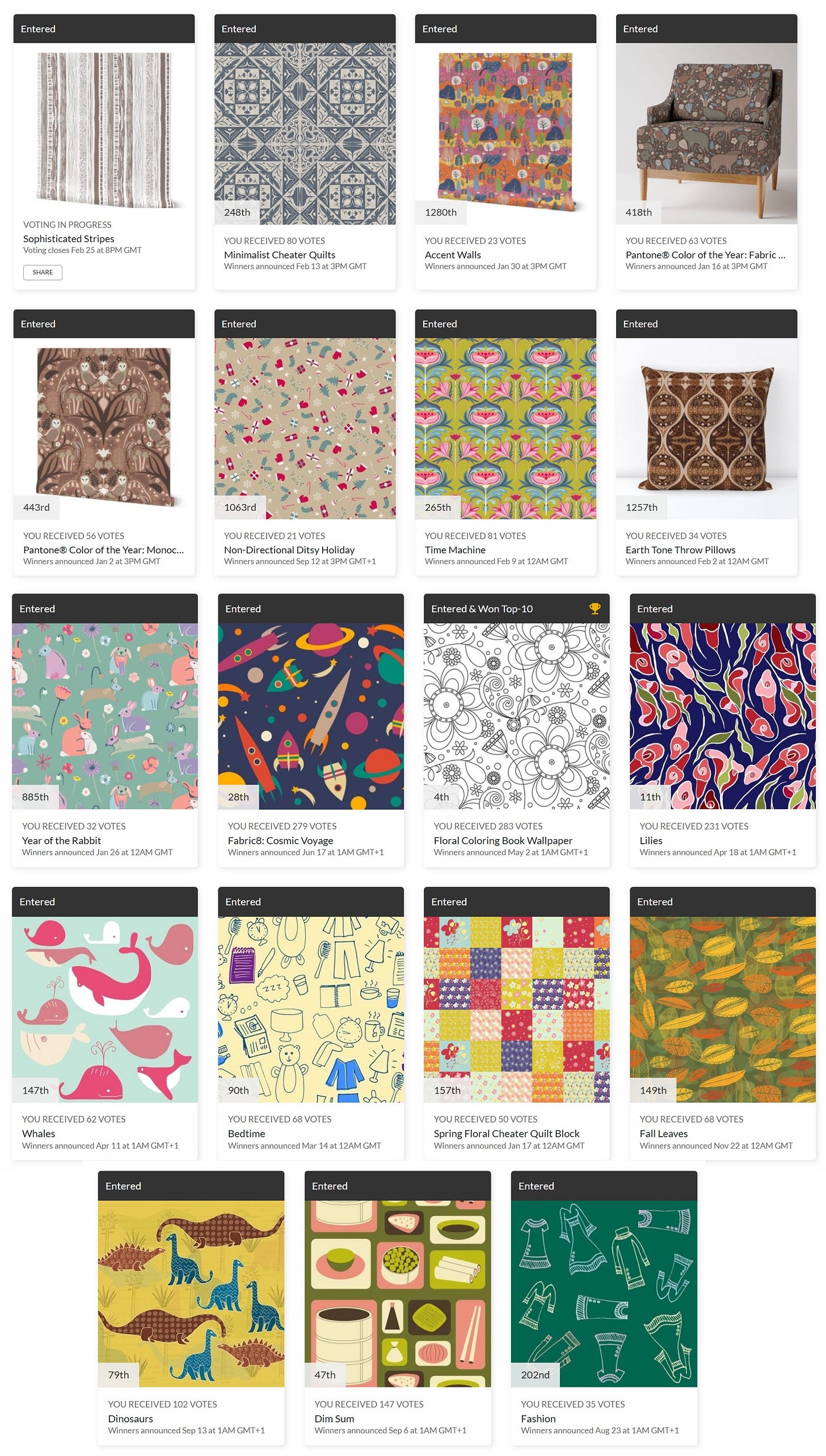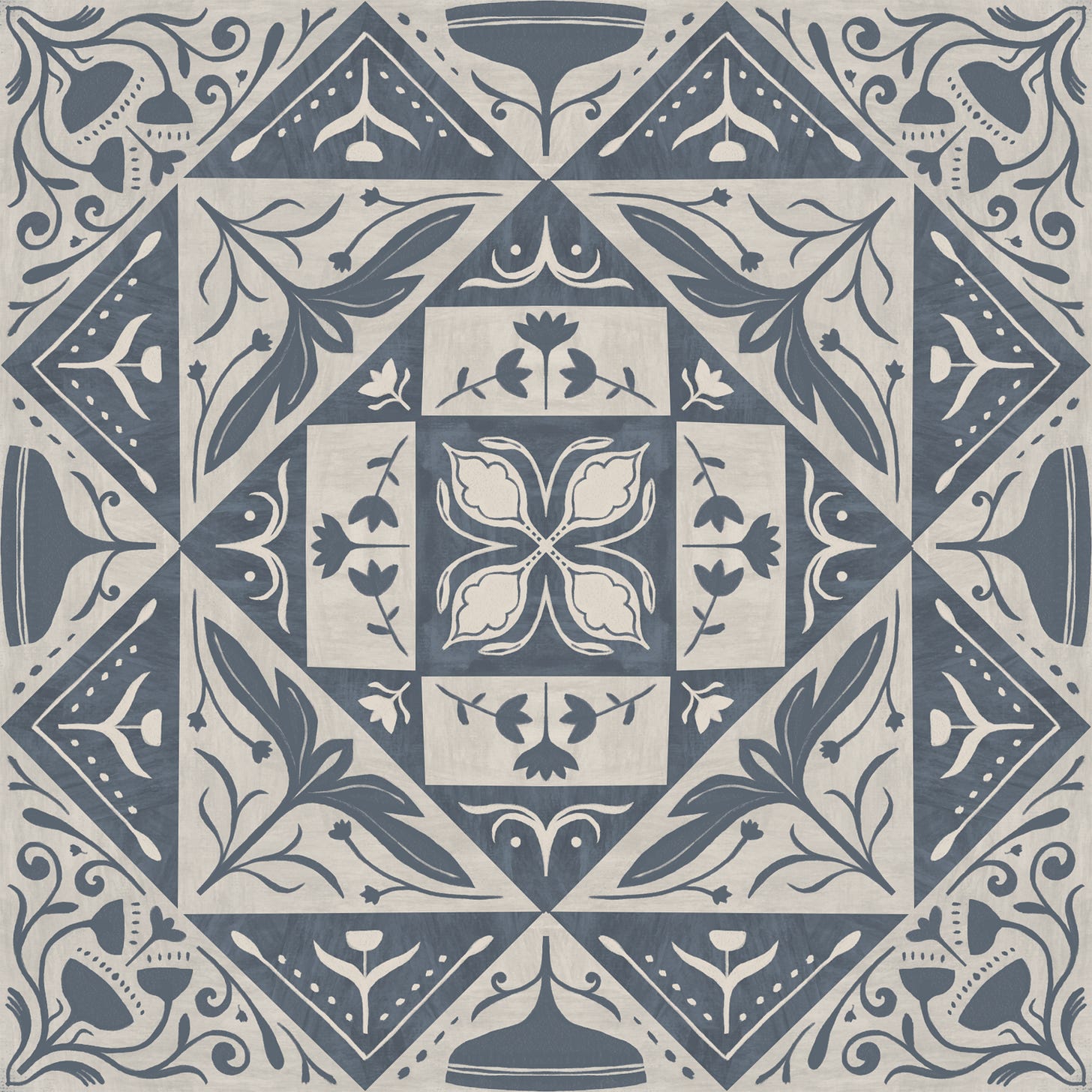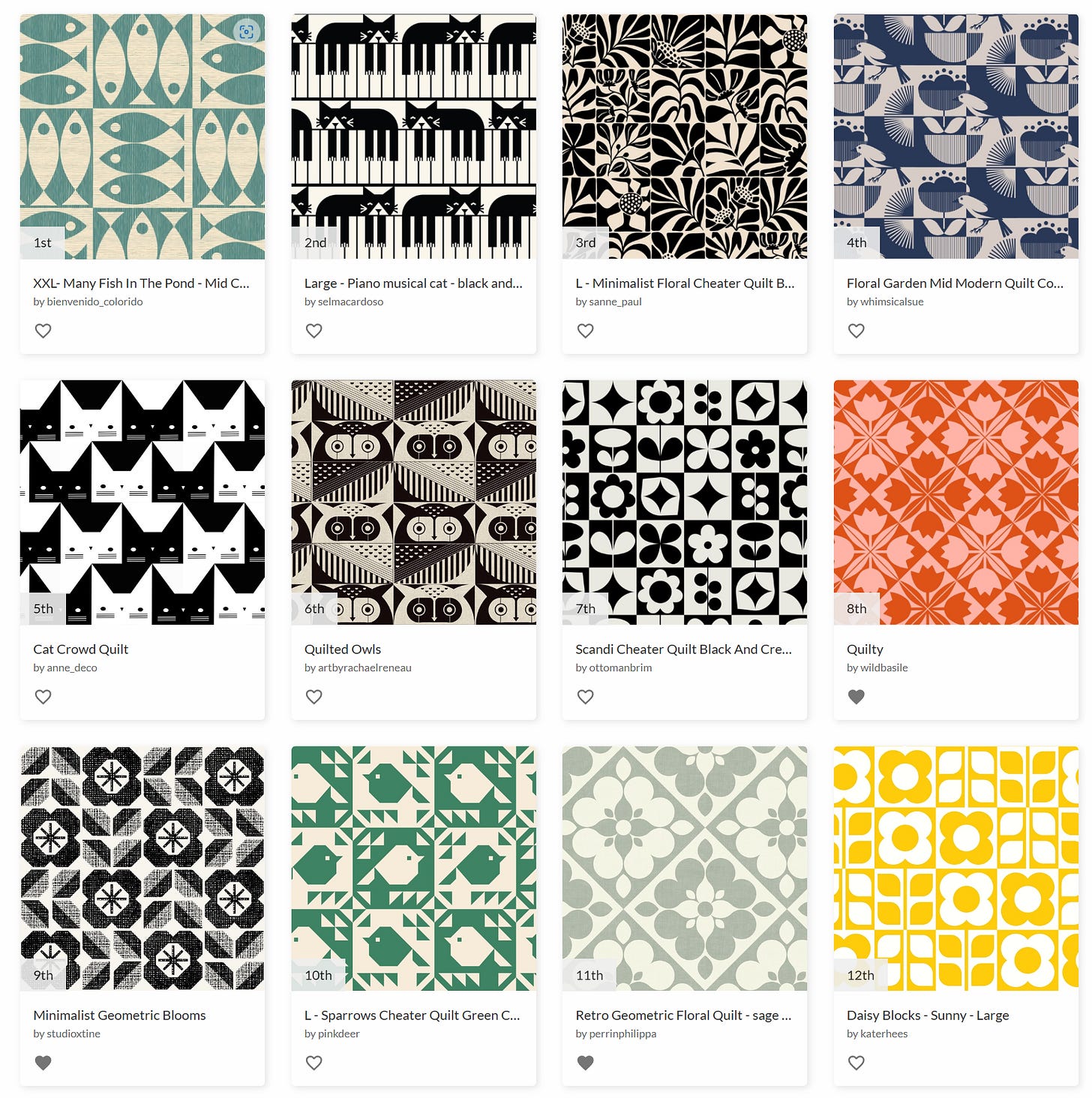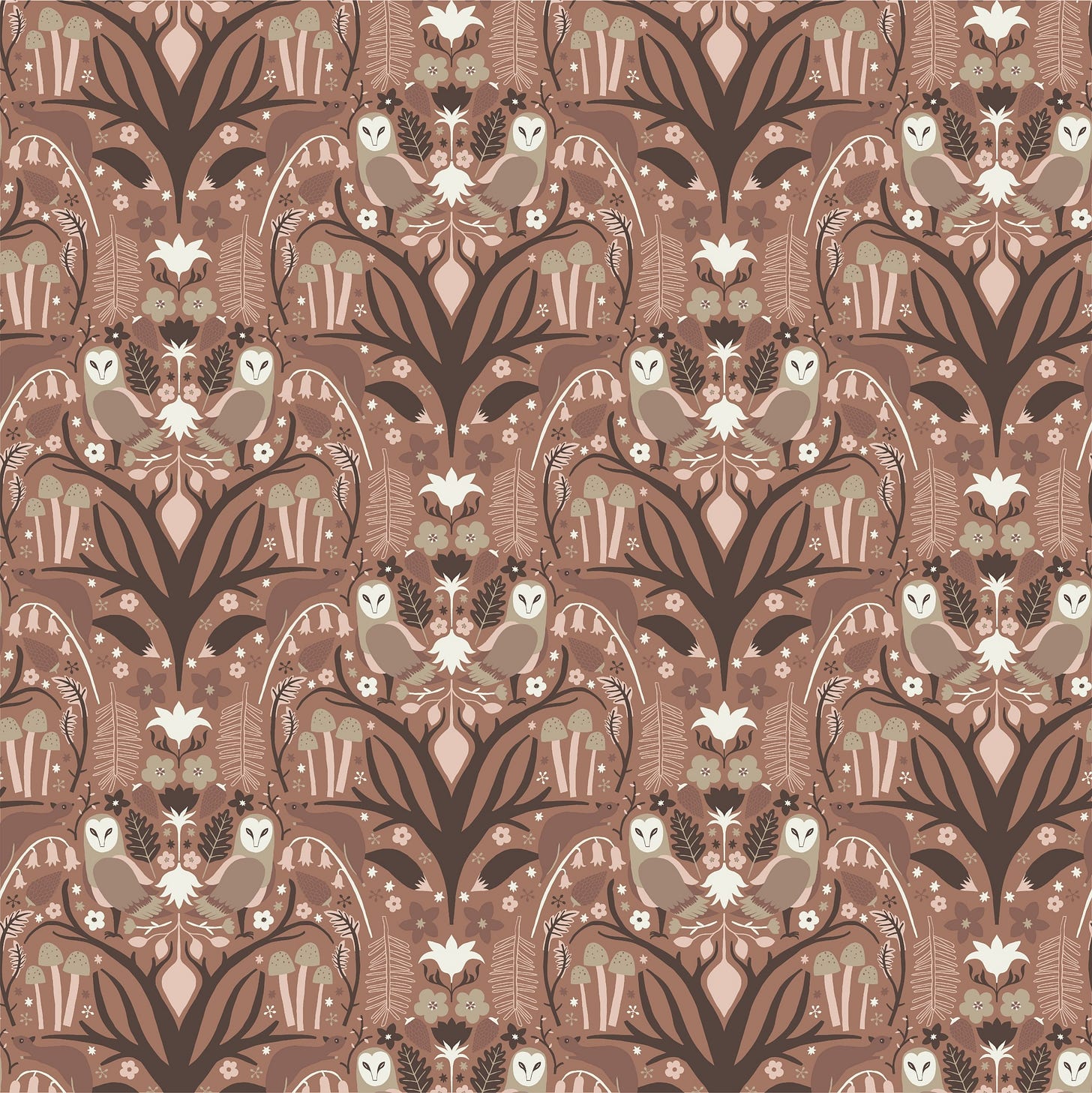I have felt myself drawn to do more patterns over recent months. Pattern creation is an art practice that I find very enjoyable, with a lot of mindful and calming bonuses. It’s the one that started me off on this mid-life additional career. And then my eye was caught by illustration and wanting to get a lot deeper into creating and earning from art. I never fully stopped creating patterns, but it definitely slipped far down in my priorities during the last five or six years.
I have made some patterns over the last couple of years, but they have been fairly random. This year, on my Bingo Card (see last week’s post to find out about that) is ‘Enter all the Spoonflower competitions’. Last year, I had ‘Place in Top 10 of a Spoonflower Comp’. Which didn’t happen. And not surprisingly, because I only entered two of 2024’s challenges. So, rather than aiming for a Top 10 or a win, or even just a Top 100, I put a goal that I can absolutely achieve, because it relies only on me and not on other people’s votes. And that is to enter all the challenges in the year. This will include briefs that don’t particularly call to me, but I kind of like the challenge of trying them anyway and finding a way to make them work for my style and my practice. I feel this is a good way to keep flexing those pattern-making skills and hopefully improve them. With the added impetus of trying to place higher as I move through the year.
Paid subscribers can see my whole history of Spoonflower challenge entries, from the one time I got a Top 10 down to my lowest placing – last month! And I’ll be checking in regularly through the year to share how I do in the challenges, whether I make any sales there, but also (this is the bit that I would find most interesting if someone else was sharing, so I hope it will interest some of you, too) my thought processes, my sketches, and my analysis and takeaways from each entry.
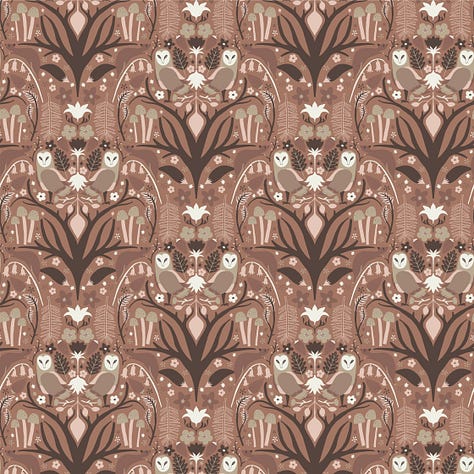
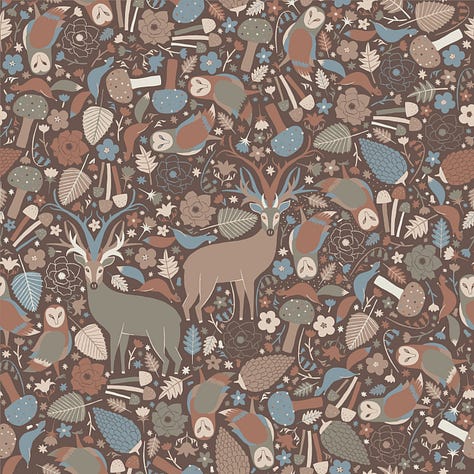
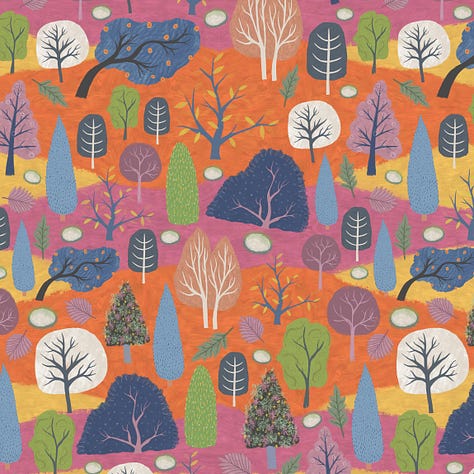
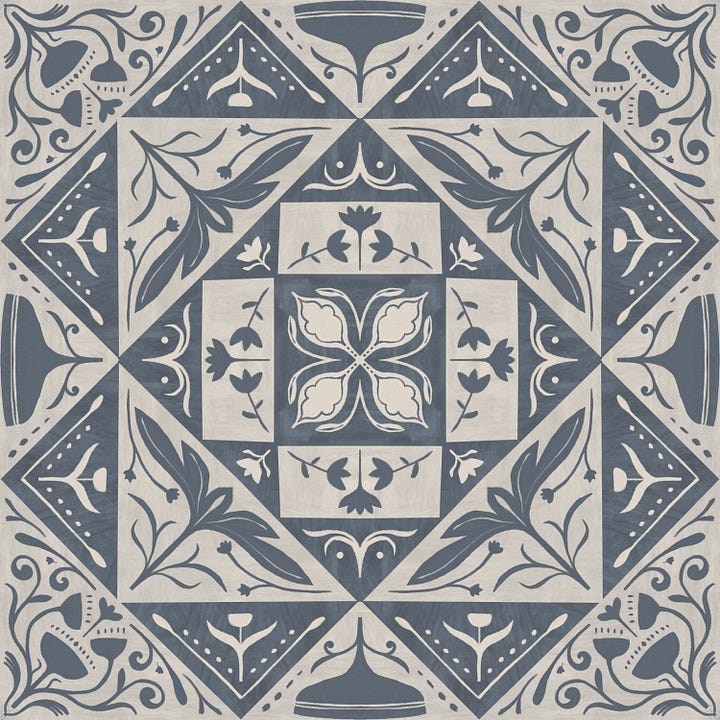
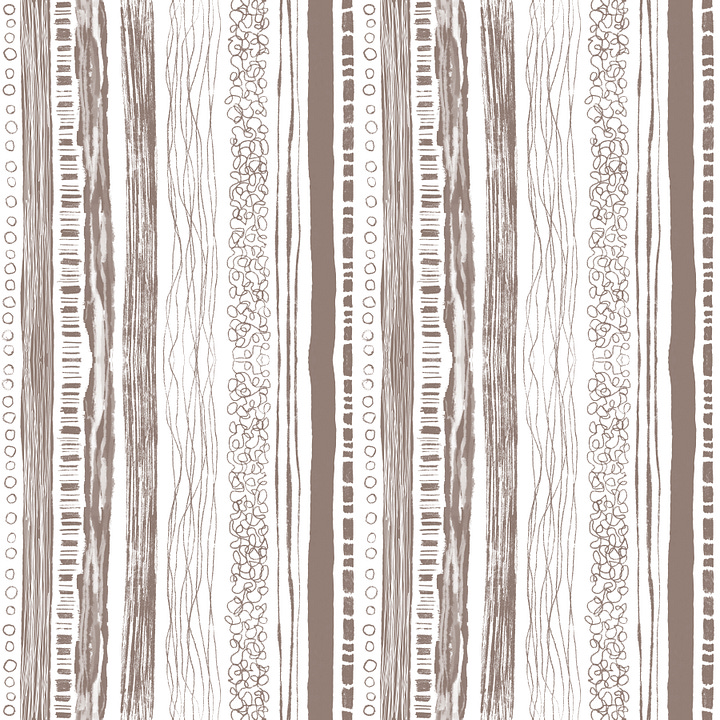
This isn’t a salesy post, but I’ll just mention that you can buy fabric, wallpaper and a number of products with these patterns on, and other patterns of mine, both old and new, from my Spoonflower shop if you want to.
The other thing I’m doing, is adding new patterns to my Patternbank store. This is something I fully let drop over the last few years and have had no income from there at all for a while. Again, I’d like to use making and uploading patterns there as part of my flexing those pattern-making muscles again, but without, for now at least, the extra work of pitching to brands who license patterns. I would like to do that later in the year – maybe toward the summer or in the autumn – once I’ve done a fair bit more of reminding myself how to make good patterns!
You can view my Patternbank page here. This is one for licensing patterns to use yourself (or for your brand or company). There are mockups of the patterns on different products, but these are just for inspiration, it’s not a place to buy products, just patterns. It costs more than microstock sites, but not a huge amount for non-exclusive licences. But earns me a lot more than microstock sites, which I am not going to pursue any more, at least not at the moment.
What I’m looking for at the moment is a way to help me thread this joyful creative practice back into my life a lot more, while having the possibility of making some money from it, and for it to be something that I am happy to keep doing when I’m very busy, but don’t have the energy for more detailed illustration work, which can be the case. Patterns for me are quite a mindful pleasant activity, though, they can also get frustrating sometimes.
The latest challenge (Sophisticated Stripes) is available to vote on until 25 February and the next two challenges (Novelty Paisley and Heritage Revival) are open for entries now. If you’re interested in getting into pattern design, I think it can be a nice way to practise and challenge yourself, and potentially earn some extra income (though I wouldn’t suggest trying to do it just for that). You can see the Spoonflower challenge page here.
I’m going to start by sharing my pattern earnings from the last decade, then move on to sharing about my Spoonflower challenge results over the years, and then I’ll share some process about some of the patterns I made recently, and finally I’ll talk a bit about the upcoming two challenges and how I’m thinking about starting there.
Earnings from patterns
Here are the last decade’s earnings from patterns – Spoonflower, Patternbank and licenses/buyouts. So a total of around £3500. (I’ve kind of tried to translate dollars and euros to GBP, but it’s a very loose translation as obviously the exchange rates differed a lot over those years.) Over decade. Which is really not a lot.

I make other money from illustration work, and more again from our educational publishing business, which is still my main income source.
I’m sharing this mostly for the insight into the Patternbank and Spoonflower earnings. With Patternbank, I earned more when I was putting more effort in and there haven’t been any evergreen patterns that have kept dripping an income in. I’ve done almost nothing there in the last five years – just an occasional upload of one or two patterns.
Spoonflower has dripped in somewhat throughout the last decade, though almost entirely from a single pattern. This one.

There are people out there who make a lot from Spoonflower or Patternbank. They are creating new work and uploading it regularly and consistently. On Spoonflower, they’re not just doing the challenges, but creating regular full collections and digging into trends they know about or see (the challenges are usually trends based, but they certainly don’t cover everything) and they’re creating multiple scales and multiple colourways for a lot of their patterns. If you look around on Spoonflower, some people have hundreds or thousands of patterns they’ve created. There will even be flat colour blocks – these will be in there to go with a pattern collection and are aimed largely at quilters, I think. I haven’t tried that – I did upload multiple colourways of this week’s entry, just to try that out, really. I might get to the point later in the year where I want to do more and create and upload collections, but this isn’t a focus right now.
Spoonflower challenge results
Here are all the Spoonflower challenges I’ve entered so far. Annoyingly, it doesn’t show the year
This shows how many (or how few!) votes I got, as well as where I placed. I feel that a lot more people take part these days. There have been, I think, close to two thousand entries on each of these five challenges and I am sure that it used to be in the hundreds when I was first entering ten years ago. You can look through all the previous Spoonflower challenges here, and it does give the dates there, and can also get to them via the ‘My design challenges’ page, if you’re a Spoonflower designer.1 I checked the one where I placed 4th and there were only 277 entries in total. That makes me feel a bit better about placing 248th out of 1625 for the recent Minimalist Cheater Quilts challenge.
Pattern-related stuff I forgot
Little white lines!
Sometimes you need to put an Illustrator run-out tile into Photoshop and trim the tiny pixel you can see around the edge. Can take a bit of faffing to ensure it’s the right dimensions.
Or you can try placing the Illustrator file into a Photoshop document and then flattening. Sometimes that works fine.
Both Spoonflower and Patternbank have really good previews so you can look for those lines and other join errors that may have crept in somehow during the upload process and can go and fix them.
These days I’m doing a lot of the work in Fresco, by kind of manually doing an offset2 and occasionally I mess that up and the joins go wrong. I try to always keep a version of the layer, or layer group before cutting them up (at each point), so I can always go back a stage if necessary.
Thoughts about the Spoonflower challenges
You need to really think about how it’s going to be displayed for the challenge. For example, this pattern, I feel might have gotten more votes if it had been at a larger scale. But I also think I probably would have done better going with a damask pattern.
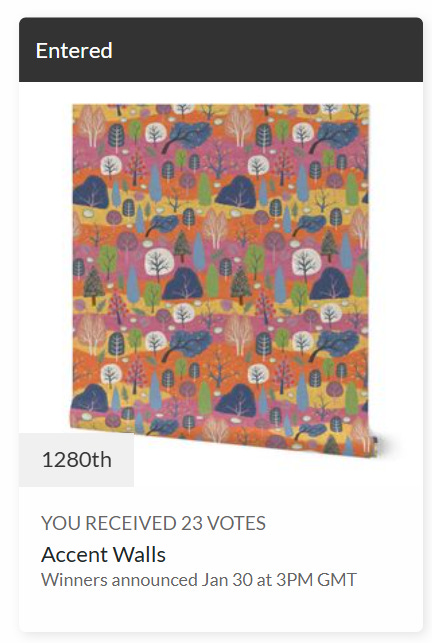
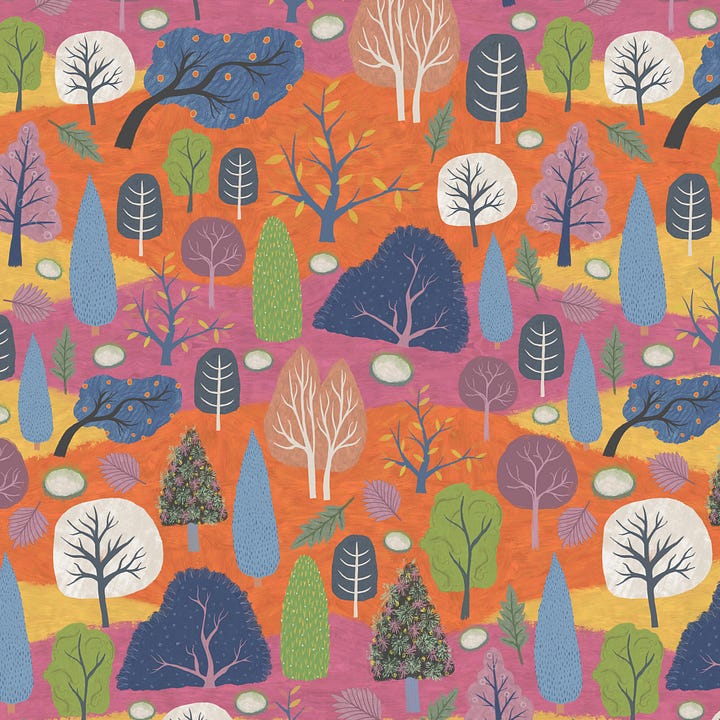
You need to think about how you might be able to stand out from other entries. I did think this would stand out, but I think the scale really let it down.
These were the top 12 for that challenge. You can see that the scale is much bigger, even the one with a scene.
I think my Minimalist Cheater Quilt may have stood out a bit because it was veering off from minimalist (As a full-on maximalist, that was really as minimalist as I could go.) Though there was plenty of minimalism in the winners, but most with a bit of a twist of some kind.
Which leads me to another thought… that simpler can often work better. This is something I find very hard, but I remember that when I was designing with studios it was the simpler patterns that took me a really short amount of time to create that did better than the ones I spent ages and lots of efforts over. And, frustratingly, the ones I liked did worse. Because I am not really a fashion-follower, even if I do soak up some trends without realising it.
Flowers and birds are very popular. And I love drawing flowers (and quite like drawing birds). If you look in my go-with-the-flow sketchbooks, they are almost entirely full of floral patterns. So I should lean into that a lot.
How I made some of these patterns
Minimalist Cheater Quilt Block
I researched quilt block pattern types and picked a few that I particularly liked. I can’t find notes or sketches, so I probably just had a list on my screen.
Then I played with them in Fresco, drawing out the pattern block and then filling it in with flat colour, texture and mark making and trying different colours (but always just two colours in total).
I quite liked all of these and was probably going to go with the black and white one, but then I kept going a bit further and ended up adding in folk art motifs and kept going with that until I felt that was the one.
I think this might have been better with more contrast between the two colours and with less texture. I am bringing in more and more texture to my illustration these days, but I do wonder if I should be defaulting to vector a lot more with pattern design.
Mocha Forest
I started with sketching a number of forest flora and fauna motifs in Fresco, with a concept pencil brush.
Then I brought these into a new file and switched on symmetry and drew over the sketches to create vector motifs using the colour palette.
I did rough tests of the tile within Fresco so that I get the main motif mostly set fully drawn and set up in Fresco on the iPad.
And then I brought it into Illustrator and finished off there (no timelapse of that, sorry) using the pattern tool to double-check it.
I almost certainly will have taken the final tile into Photoshop to trim it to remove any white lines, though sometimes that’s not necessary.3
I do really like this one, but there are some points I might change looking at it with hindsight. I think the colour of the squirrel and pine cone doesn’t have enough contrast with the background colour (I think that one is the Mocha Mousse Pantone Colour of the Year). This does have a specific colour palette, but I think that colour would have worked better when it was only next to other colours rather than the mocha mousse. I also feel that some of the almost white motifs (owl’s face and some of the larger leaves is maybe too bright and that colour could have been left for smaller elements like the small flowers.
Upcoming Spoonflower challenges
The two upcoming challenges look like they will be really fun.
The first one is Paisleys, which I have loved for a long time, as I mentioned in this Note (and, yes, it was definitely this challenge that inspired me to draw a Paisley pattern in my Morning Ink session).
I’ll start by looking through a number of books on my shelves. I have a Paisley Patterns by Valerie Reilly, Owen Jones’s The Grammar of Ornament, which I think is ‘the bible of pattern design’. I also have three of the Print and Pattern books and quite a few boxes of pattern postcards from the V&A, which will almost certainly contain a few paisleys. I love it when I can go to my bookshelves first for inspiration.
If I feel I need a bit more, I’ll head to some public domain libraries to look at historic paisley patterns. I’ll try to keep away from Pinterest and more contemporary work, but I might take a look if I feel lost or blocked at all. I feel that’s unlikely, but you never know.
Then I’ll brainstorm some ideas for how to make it ‘novelty’ and sketch out some potential motifs to include.
And then I’ll come up with some colour palette ideas.
And then I might sketch out some layout ideas in my sketchbook to try to come up with a way to keep it at a larger scale but still be able to get a good few different motifs in there.
The second one looks fun, too.
I have always loved Arts and Crafts patterns and some of the opulent traditional wallpaper you see in big old country homes. So this will be another joyful one to work on. There’s a very good chance I’ll go down the half-drop damask/diamond/ogee route, but I might find I go in a different direction.
Again, I have the benefit of lots of great inspiration material on my bookshelves, so I’ll head there first. The Grammar of Ornament again, plus William Morris and May Morris books and those boxes of postcards. Oh, and the V&A Sourcebook of Pattern and Ornament, which is full of gorgeous patterns. And I’ll go look at public domain material.
And I’ll be sketching motifs and ideas as they come while looking through those and, again, will sketch some composition ideas in my sketchbook to try to keep the scale OK. Before heading into Fresco, probably with the symmetry tool switched on. I am really wanting to dive right in now, actually.
And I’ll be taking pictures of sketches as I go and may even try videoing some of the process, to share with you next month, along the results I have by then.
Thanks for reading (this was ridiculously long and took me ages to write, but I have enjoyed it and future ones won’t be quite so long. Probably.
I hope some of this was of interest. I know this publication is mostly about illustration so rest assured there will be other things coming up that are much more about illustration. I’m not turning this into a Pattern Design publication, but I do think pattern design is very adjacent to illustration and I know there are quite a lot of other people who do both or illustrators who would like to explore it a bit more.
I’m planning to build an Airtable sheet to track my challenge entries and I’ll draw some of the data from this page, including the date of the challenge and how many entries there were. I’ll also probably create another one to track all the patterns I’m creating this year and how they’re doing. I’ll share this in the next pattern post. I think I’ll use Airtable because you can easily add images to fields, which is an absolute pain still in Excel. (Yes, I am a spreadsheet geek. Not at all sorry.)
Shout if you need to know what an offset is. I can demonstrate it in a future post if it would be of interest.
I’m really hoping that this year of regular pattern practice will remind me of the settings to use in Illustrator (or surface those that work well in Fresco) that will avoid ever getting join errors and white lines.





